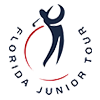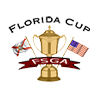Written by: Darin Green, Senior Director of Rules & Competitions
Florida experiences extreme weather conditions occasionally and sometimes these weather conditions can damage large parts of a course or restrict mowers from cutting the grass. When such conditions are widespread on the course, the Committee has the authority to implement Model Local Rule E-3 “Preferred Lies,” better known as “Lift, Clean and Place.”
When this Local Rule is adopted, the Committee must specify what parts of the course the Rule applies to and the size of the relief area.
The Rules of Golf say “the use of this Local Rule outside the fairway is not recommended as it may result in a player receiving free relief from areas where a ball might otherwise by unplayable (such as in areas of bushes or trees).”
The size of the relief area should be something that a player can easily measure; like a club-length or a scorecard. In the rare cases when the FSGA plays preferred lies, we always use a club-length as the relief area.
This Local Rule must not be implemented after play has begun for a stroke-play round.
Below is the suggested language when implementing Model Local Rule E-3:
Model Local Rule E-3 - Preferred Lies
“When a player’s ball lies in a part of the general area cut to fairway height or less [or identify a specific area such as ‘on the fairway of the 6th hole’], the player may take free relief once by placing the original ball or another ball in and playing it from this relief area:
- Reference Point: Spot of the original ball.
Size of Relief Area Measured from Reference Point: [Specify size of relief area, such as one club-length, one scorecard length or 6 inches] from the reference point, but with these limits:
Limits on Location of Relief Area:
- Must not be nearer the hole than the reference point, and
- Must be in the general area.
In proceeding under this Local Rule, the player must choose a spot to place the ball and use the procedures for replacing a ball under Rules 14.2b(2) and 14.2e.





